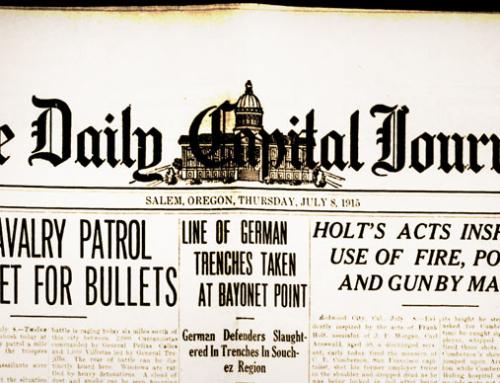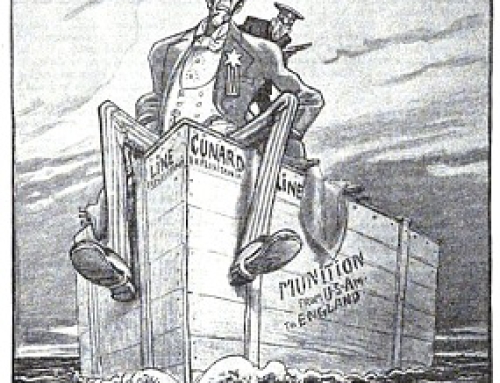by Richard van Pelt, WWI Correspondent
The headlining stories in the Capital Journal include:
GERMAN’S ATTEMPT TO SMASH LINE AT YPRES IS REPULSED
Columns Shattered and Unnerved Retreat In Great Disorder
Paris, Feb. 1. – The Germans have been thrown back violently in another attempt to smash through the lines of the allies at Ypres. French infantrymen met the assault so well with the bayonet that the enemy’s columns, shattered and unnerved, were repulsed in great disorder.
This announcement, contained in the official statement issued by the war office this afternoon, created a tremendous wave of enthusiasm throughout the city. For several days it has been reported that the Germans were massing reinforcements in Belgium for a new drive.
When the assault was delivered, however, the French were found to be ready. Their riflemen mowed down the enemy’s first ranks with a murderous fire before charging with the bayonet to complete the repulse. The ease with which the first German attacks were checked as resulted in supreme confidence in the power of French arms.
The editor provides a brief history of fortifications and the effects of modern technology:
FAILURE OF FORTIFICATIONS
In the days of primitive man it was the biggest giant with the biggest club who won the fight. In the age of highest ancient civilization it was the biggest army that won the battle. Science and genius have done wonders since in the way of guns, projectiles, armaments and fortifications, through which intellect was supposed to have gained mastery over more brute force.
But already it has been clearly demonstrated in this war that for every armor plate there is an effective projectile and for every fortification there is a sufficiently heavy gun.
It was Elias Johnson, an American, who invented the projectile that pierces a 14-inch Harveyized steel plate, almost as if it were tissue paper. He simply put a soft-metal cap, or collar, on the projectile’s point, which prevents it from flattening. Thus armaments opting millions upon millions are turned into scrap heaps.
The photographs of the ruined Belgian works show clear that the term “impregnable fortification” is but an empty sound.
And once more,as of old, the issue turns upon the size of armies, the power of brute strength.
Germany seems to have realized the futility of defenses and has done little to fortify her borders. Her dependence is upon her marvelously effective army; upon this she has relied from the first and must rely even if forced back upon her own territory.
Not a single fortification has proved to be a strategic point in this war. It is being decided from the first to last in open battles, just as in the days of old.
How futile, after all, in the supreme test, is the long and much discussed armament.







Leave A Comment